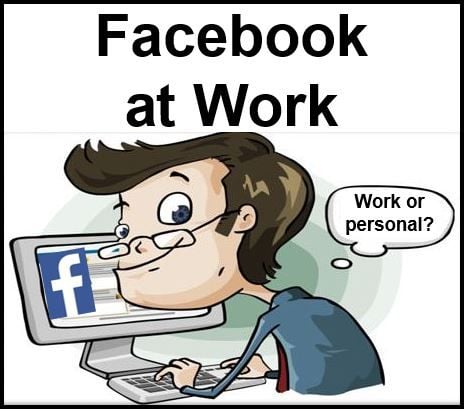Facebook At Work, a new application aimed at businesses, will be available at some app stores on Wednesday, the online social networking giant announced. Opinions are divided on how Facebook will fare in the corporate world.
It is already available at the iOS app store (soon to come to Android). However, you can only use it if your company is part of a beta trial.
The app, which was developed in London, will be tested on a limited number of companies. However, the release suggests Facebook aims to push the workplace trial forward. Testing has been underway since November 2014.
Facebook at Work users will be able to communicate either through a mobile app or a web interface, rather than email. The Menlo Park-based company says the application is still in its preliminary stages and is very much a beta product.
The app has the feel and appearance of Facebook’s standard social network service. But there are some subtle differences. Facebook does not hold user data or track them. You will find no ads on the platform either.
Its “Groups” feature will hopefully replace email lists, which annoy many users as they get longer and longer.
Facebook said in a statement:
“Facebook at Work is a separate experience that gives employees the ability to connect and collaborate efficiently using Facebook tools – many that they’re likely already using such as News Feed, Groups, messages and events,” the social network said in a statement.”
“The information shared among employees is only accessible to people in the company.”
With Facebook At Work, the company is entering completely new and potentially lucrative territory. The company is expected to earn money by charging users rather than selling advertising.
How will employers be able to stop workers from switching from their professional to personal app?
Several large corporations are vying for market share in workplace social networking. In 2012, Microsoft bought social-enterprise firm Yammer and has been busily incorporating it into its Office productivity suite. IBM has Connections, its own corporate social networking service.
Slack, a team communication tool founded by Stewart Butterfield, was launched in August 2013 and signed up 8,000 customers within 24 hours. The enterprise-collaboration tool is valued at about $1 billion.
With Facebook at Work, staff members can communicate with one another through the social network’s current tools, using newsfeeds and messaging, but without mixing up personal and professional posts.
Facebook at Work – screenshot taken from the iOS app store.
For the app to succeed, the software will need to be helpful for the business environment. Facebook’s massive advantage over competitors is that most users will already be familiar with how its existing social media platform works.
While Facebook has more than 1.4 billion users, each subscriber only spends an average of about 40 minutes per day using the platform, which is much less than other social services.
Most businesses block Facebook access in the workplace. By making Facebook at Work available, that problem would hopefully be overcome.
The new tool for employers and employees today is LinkedIn, with more than 300 million active users.
The Wall Street Journal quoted Lars Rasmussen, the Facebook engineer who has been working on the new software, who said in an email “We’ve been using Facebook for work for many years now internally, and we’ve gained a lot of insight into how people can collaborate more efficiently.”


